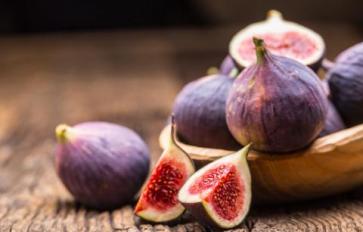
The price of food has become ridiculous these days. Buying organic, whole healthy foods strains our already squeezed pockets. The market is saturated with Genetically Modified Organisms (GMO), and with Bayer’s acquisition of Monsanto, who knows what the future holds for our food supplies. This merger could create a monopoly on the market, upping the price of food for both farmers and consumers. It appears to be a worrisome turn of events – for example, less variety in our food, says Bill Giebler from The New Hope network: “In the last century…the U.N. Food and Agriculture Organization estimates a 90 percent reduction of varieties in cultivation—a near extinction of what feeds us.”
This raises the question: were GMOs created to feed the world? According to Jeffery M. Smith, founder of the Institute for Responsible Technology, the answer is, in a nutshell: no.
GMOs were created when Monsanto’s patent on the popular herbicide Roundup ran out in 2000. They created Roundup-ready crops for farmers, which would extend the patent on the Roundup. Unfortunately, a new 14-year study found that these GMO products increased the use of herbicide by 28% -- the opposite of what we actually want happening.
However, where there is a will, there is always a way. While we are not at the stage of saying hasta la vista to the supermarket just yet, we can significantly reduce the bill by using resources we already have.
Over the next serval articles, we'll explore 21 foods we can grow from scraps we would otherwise throw away.
Before Getting Started
Tips to Keep in Mind:
- Use organically grown produce to reduce the chemical treatments in the plant
- It is best to use products with the heirloom (older, open-pollinated varieties handed down from previous generations) label on it to prevent planting hybrids
- Hybrids will grow but you cannot be certain of the results
- If you are growing them in pots as opposed to in the garden, give the plants some liquid fertilizer at half strength. Here are natural fertilizers you can make in your kitchen.
- Have fun
Protein Source: Legume Section
Bean Sprouts

Note: Use clean, whole, chemical-free and bright green in color (depending on the bean) beans to prevent sprout- related illness.
Average Cost In U.S. and Midwest Region
Time to Reach Maturity: 4-5 days
Scraps to Garden:
- Fill a 3 cup jar with cool, clean water.
- Place 2 tablespoons of beans in the jar. Give the beans space to expand.
- Cover the jar with a piece of cheesecloth. Secure the covering by tying with a string or rubber band.
- Soak the beans at room temperature for about 8-12 hours, on average. Larger beans should soak closer to 12 hours.
- Drain the water out, rinse the seeds and drain again.
- Place the jars upside down at a slightly tilted angle to allow air to circulate near the opening.
- Store them away from the sunlight.
- Keep rinsing and draining the beans 2-4 times daily until the sprouts grow to your desired length.
Fun Facts:
- Some names for Bean Sprouts are moyashi in Japanese, yar tsai in Mandarin and ngar choy in Cantonese.
- Bean Sprouts were eaten by the nobles in ancient China for healing and rejuvenation.
Lentils

Average Cost In U.S. and Midwest Region
$1.49 per pound
Time to Reach Maturity: 80-110 days
Scraps to Garden:
- Choose whole seeds with a uniformed shape and size.
- Fill a bowl with warm water.
- Soak the seeds overnight.
- If you are growing in pots, sterilize the pots with bleach and water. Use a 1:9 ratio of 1 part bleach: 9 parts water.
- If you are planting in pots, use 1 pot per plant. Use pots that are 8 inches deep with drainage holes at the bottom.
- When planting in the garden, plant them 1 inch deep, 4-5 inches apart, and space the rows 18-24 inches apart.
- Plant them in full sun and water lightly.
- When planting use half soil, half compost. The soil should have a pH level of 6-6.5 (goes for both pots and garden).
- Use three seeds for each plant you desire to have.
- Water the seeds until water runs through the drainage holes.
- Cover the pots with a clear plastic wrap and put in a warm location until seeds begin to sprout. This takes about 3-8 days.
- Once the seeds have sprouted, move the pots to a sunny location.
- Lentils prefer a slightly drier soil so be careful not to overwater.
- When lentils are about 5 inches tall add some more compost.
- Add a trellis to train the lentils to grow by tying the stem of the plant loosely on the 3-foot trellis.
- It is time to harvest when most of the pods have turned yellow and become dry.
Fun Facts
- Lentils were found in the tombs of ancient Egyptians in 2400 B.C.
- A diet with lentils lowers your cholesterol and blood sugar levels.
- The Latin word for lentils is lens, this is where the name for the optical lens originated.
Buckwheat

Average Cost In U.S. and Midwest Region
$6 per bag
Time to Reach Maturity: 1 Month
Scraps to Garden:
- Plant buckwheat 3 months before the fall frost.
- Use 3 ounces of seed for 100 feet area.
- Plant the seeds about an inch deep into the soil.
- Separate them in narrow rows.
- Cover the seeds with a little soil and dried leaves but make sure the seeds are not more than 1.5 inches into the soil.
- Do not plant in wet soil as this will stunt the growth because of its fine root system.
- It is time to harvest when 80-90% of the seeds have turned brown; waiting longer will result in seed loss.
Fun Facts
- Buckwheat is mostly grown as a cover crop to prevent pests, yield better soil and for bees to pollinate.
- Buckwheat is a part of the sorrel and rhubarb family; its grains are the dried fruit of the plant.
“Can the garden afford anything more delightful to view than those forests of asparagus, artichokes, lettuce, peas, beans and other legumes and edulous plants so different in color and of such various shapes, rising as if it were from the dead and piercing the ground in so many thousand places as they do, courting the admiration or requiring the care of the diligent." Stephen Switzer The Practical Gardiner 1682-1745
Resources:
- http://www.howmuchisit.org/how-much-do-bean-sprouts-cost/
- http://www.motherearthnews.com/organic-gardening/how-to-grow-buckwheat-zmaz86mjzgoe.aspx
- http://www.rodalesorganiclife.com/garden/buckwheat-summer-soil-boost
- http://servingjoy.com/fun-facts-of-bean-sprouts/
- http://www.specialtyproduce.com/produce/Bean_Sprouts_Mung_269.php
- http://www.healthdiaries.com/eatthis/20-facts-about-lentils.html
- http://homeguides.sfgate.com/grow-lentils-pots-96545.html








